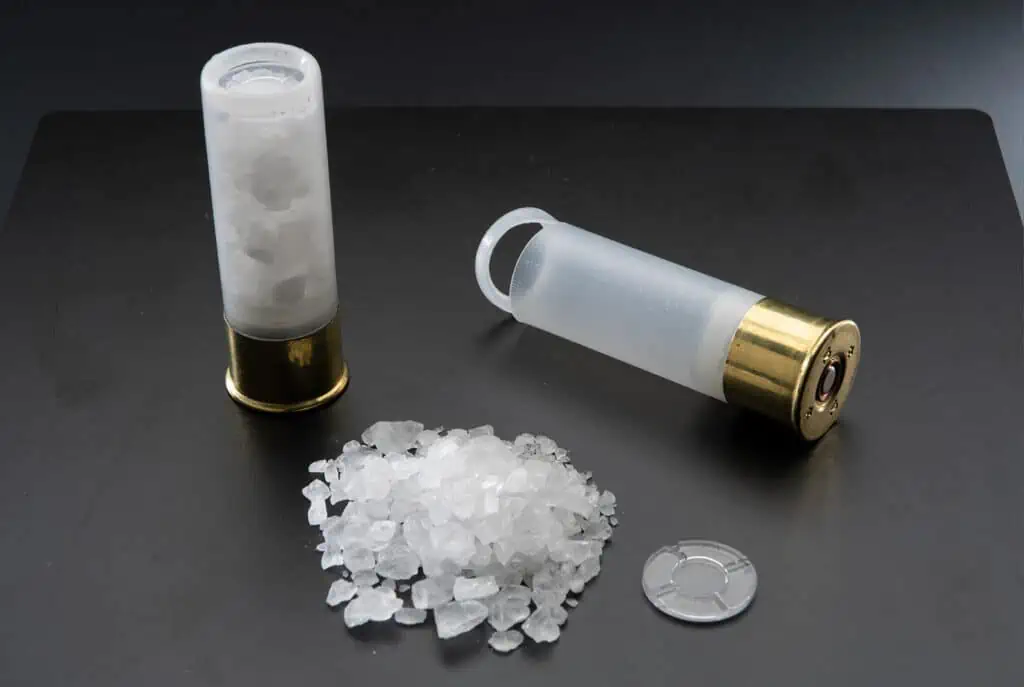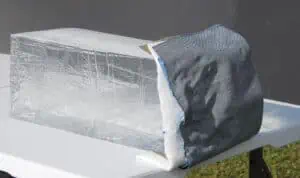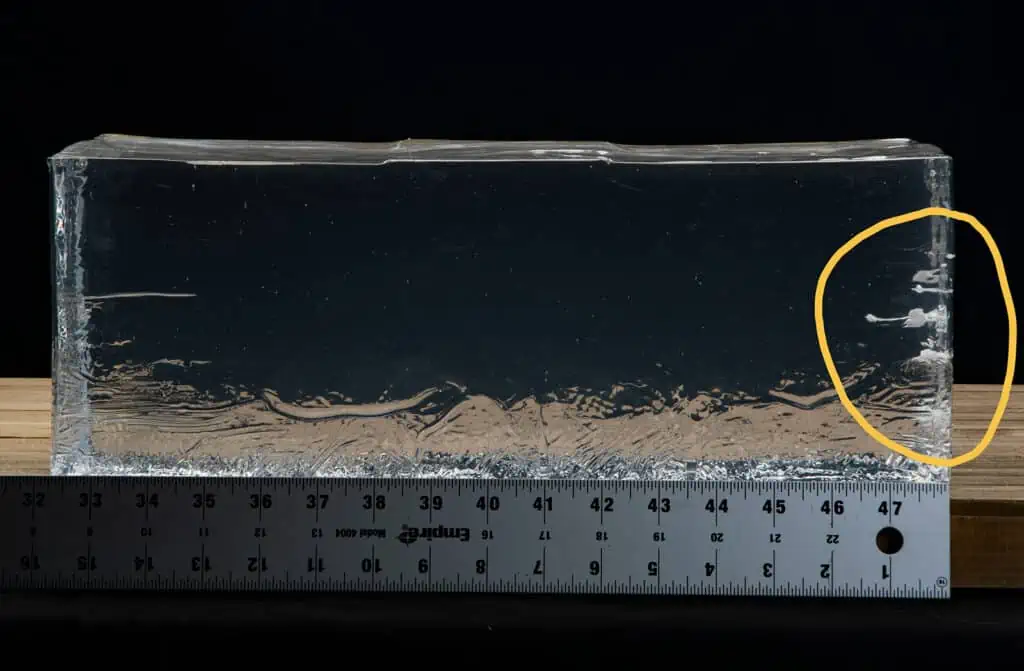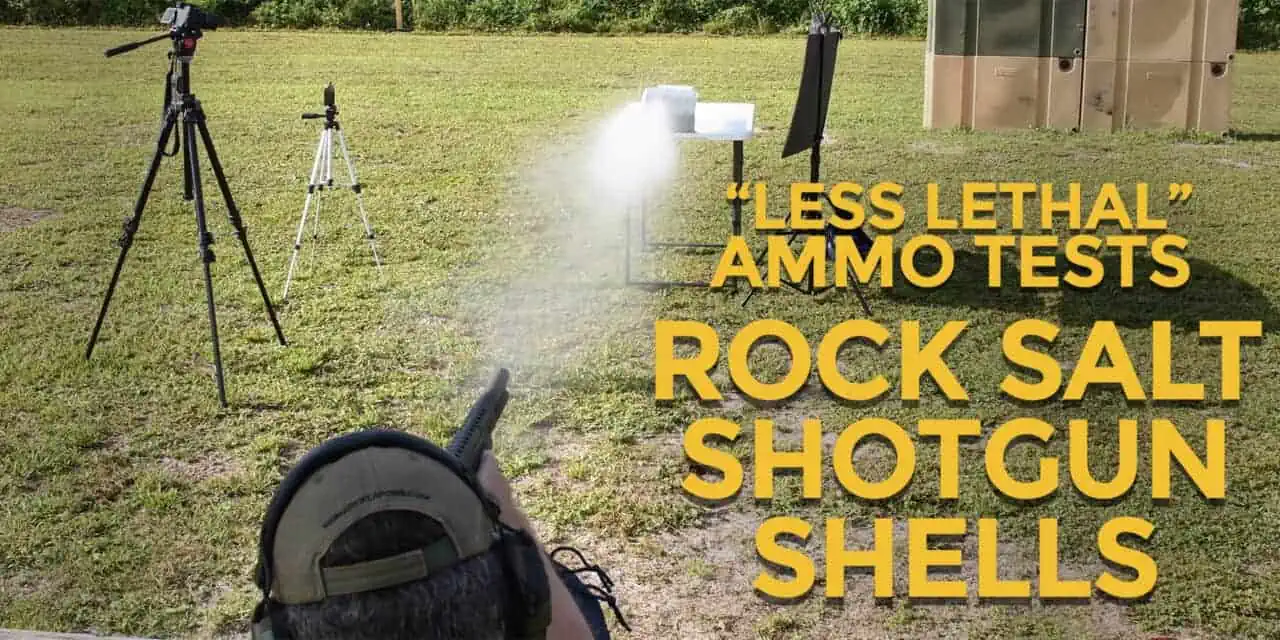Seasonings Greeting: Testing Rock Salt Shotgun Shells
The idea of loading up a shotgun with rock salt has been around a long time. There are stories from the old west of how a coach gun loaded up with rock salt was used to scatter a pack of rambunctious teenage boys. Another about how rock salt chased a hungry coyote away from a campfire. A rock salt shotgun blast will scare away even the most determined of home intruders and it’ll scare the bad guys away without really hurting them, or so the story goes. Rock salt in a shotgun is, in effect, the original “less lethal” shotgun ammo. Let’s take a look at how they actually perform in an industry-standard ammo test.
First, let’s look at what’s inside a normal shotshell. A normal shotgun shell is filled with a varied number of lead pellets of different sizes. A plastic cup called a wad holder those pellets. The wad keeps the pellets together as the shell flies down the barrel. Once the shell leaves the barrel, the pellets and the wad separate. 00 Buck and similar rounds have a small number of large pellets. #8 birdshot and similar rounds have a larger number of small pellets. Larger pellets have a bigger impact on the target. Smaller pellets may have less effect on the target, but the fact that there’s more of them flying through the air means your chances of hitting something are greatly increased.
What’s Inside A Rock Salt Shotgun Shell?
A rock salt shotgun shell replaces those pellets with large salt crystals. The brand we used in our test is a preloaded version from Gum Gully Provisions and has a small plastic cap at the top of the shell to hold in the crystals inside the shell. There is also a small fiber disc at the base of the shell to push the salt crystals. The shells we tested weighed just .46 ounces on average, almost half the weight of a #7 Federal Target shotshell. The rock salt shells also varied in height, ranging from 2.51 inches to 2.57 long. The Federal target loads, on the other hand, all averaged 2.3 inches in height.
This lower weight had a dramatic effect on muzzle velocity and muzzle energy. In our tests, the Federal #7 12 gauge load had a muzzle velocity of 1106 fps at the muzzle when shot from a Mossberg 500. The cloud of salt from our test ammo, however, had a muzzle velocity of 825 fps. This means that the rock salt round has a muzzle energy of 304 foot pounds at the muzzle. This sounds impressive, but given the very light weight of the salt inside the shell, energy from the rounds dissipates very quickly.
Testing The Effects of Rock Salt Shotgun Shells
 To test what a rock salt shotgun shell does the target, we’ll shoot a round into blocks of Clear Ballistics gel from a distance of 15 feet. We covered one of the blocks with four layers of heavy cloth. We’ll fire the other round into bare gel. Ballistics gel is a very common medium to measure ammo penetration into the target and allows us to judge the performance of one round versus other rounds in a repeatable, consistent testing environment.
To test what a rock salt shotgun shell does the target, we’ll shoot a round into blocks of Clear Ballistics gel from a distance of 15 feet. We covered one of the blocks with four layers of heavy cloth. We’ll fire the other round into bare gel. Ballistics gel is a very common medium to measure ammo penetration into the target and allows us to judge the performance of one round versus other rounds in a repeatable, consistent testing environment.
Ballistics gel does not provide an exact indication of what any given round of ammo will do when it hits flesh. Rather, it provides a yardstick to measure the results of one round to another in a testing environment that can be used by almost anyone, in any location. Cars that do a quarter mile in under twelve seconds tend to be fast cars off the drag strip. In that same manner, rounds that penetrate well into ballistics gel tend to be more effective when it really matters.
With that being said, let’s look at what happens when we shot two rounds of rock salt shotgun ammo into ballistics gel. Our first shot, into four layers of heavy cloth, produced some large divots in the first layer of denim that covered the gel. The salt also penetrated all four layers of fabric, leaving behind a fine powder that wound up in between the last layer of fabric and the gel itself. Very little salt penetrated into the gel. There was one small bump of salt that embedded itself only ¼ of an inch into the gel, and that was all the effects we could see on the target.
Less Lethal, Not Non-Lethal
Shooting a round into bare gel produced different results. There were at least a half-dozen salt crystals which penetrated into the gel. Some traveled as much as an inch and a half deep. Unlike other “less lethal” rounds in our test, at a distance of 15 feet, the rock salt shotgun shell peppered the front of the gel with small holes where the round penetrated into the gel.
This is important, because in order to consider a round “less lethal,” we have to use it with the express purpose of not intentionally causing lethal damage. With a rock salt round, however, that assurance just isn’t there. Now once again, I am not a lawyer and this is not legal advice about the use of force, but there are many factors to consider here. A rock salt shotgun round sprays out bits and pieces of salt like pellets from a conventional shot shell. This means there is a non-zero chance that a crystal could penetrate a portion of the body that might result in grievous bodily harm or death, such as eye socket. The scattering effect of a rock salt shotgun round may be one of its strengths, but it also means it is not a precision weapon.
Using rock salt in a shotgun is a piece of gun lore that’s been around for decades, if not centuries. However, it’s never really been shown to do anything more than make a cloud of salty white dust and a loud noise. In addition to this, according to our tests, it definitely is not an effective way to stop an attacker from harming you or a loved one.
Our advice? Leave the salt where it belongs, in the kitchen pantry. Use more effective ammunition in your defensive shotgun.


